3-PHENYLPROPYL ISOBUTYRATE
Synonym(s):3-Phenylpropyl 2-methylpropanoate;Hydrocinnamyl isobutyrate
- CAS NO.:103-58-2
- Empirical Formula: C13H18O2
- Molecular Weight: 206.28
- MDL number: MFCD00082227
- EINECS: 203-125-0
- SAFETY DATA SHEET (SDS)
- Update Date: 2024-08-04 20:11:12
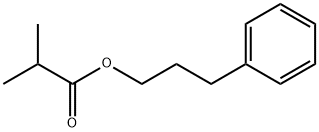
What is 3-PHENYLPROPYL ISOBUTYRATE?
Chemical properties
CLEAR COLOURLESS LIQUID
Chemical properties
3-Phenylpropyl isobutyrate has a sweet, balsamic odor and a bittersweet flavor reminiscent of peach. It has a finer and fresher odor than the corresponding n-butyrate.
The Uses of 3-PHENYLPROPYL ISOBUTYRATE
3-Phenylpropyl isobutyrate finds some use in Jasmin compositions, partly as a modifier for Benzyl-isobutyrate, partly as a supporting note for
fruity-balsarnic ingredients. It works well with
Styrax, which tends to produce a rather
"dead" note in floral compositions.
3-Phenylpropyl isobutyrate also finds use in flavor compositions, mainly in imitation Apple, Apricot,
Peach, Pear, Pineapple, Plum, Quince, etc.
and the concentration used is equivalent to
about 1 to 5 ppm in the finished product.
Preparation
By esterification of hydrocinnamic alcohol with n-butyric acid.
General Description
3-Phenylpropyl isobutyrate belongs to the cinnamyl phenylpropyl group of fragrance materials. It is the key volatile constituent of Roman camomile essential oil.
Properties of 3-PHENYLPROPYL ISOBUTYRATE
| Melting point: | -60 °C |
| Boiling point: | 282 °C (lit.) |
| Density | 0.979 g/mL at 25 °C (lit.) |
| refractive index | n |
| FEMA | 2893 | 3-PHENYLPROPYL ISOBUTYRATE |
| Flash point: | >230 °F |
| solubility | Almost insoluble in water, soluble in alcohol and oils |
| form | clear liquid |
| color | Colorless to Almost colorless |
| Odor | Fruity-balsamic, tenacious, but refreshingly sweet odor |
| JECFA Number | 640 |
| CAS DataBase Reference | 103-58-2 |
| EPA Substance Registry System | 3-Phenylpropyl isobutyrate (103-58-2) |
Safety information for 3-PHENYLPROPYL ISOBUTYRATE
| Signal word | Warning |
| Pictogram(s) |
 Exclamation Mark Irritant GHS07 |
| GHS Hazard Statements |
H302:Acute toxicity,oral H315:Skin corrosion/irritation H319:Serious eye damage/eye irritation H335:Specific target organ toxicity, single exposure;Respiratory tract irritation |
| Precautionary Statement Codes |
P261:Avoid breathing dust/fume/gas/mist/vapours/spray. P280:Wear protective gloves/protective clothing/eye protection/face protection. P301+P312:IF SWALLOWED: call a POISON CENTER or doctor/physician IF you feel unwell. P302+P352:IF ON SKIN: wash with plenty of soap and water. P305+P351+P338:IF IN EYES: Rinse cautiously with water for several minutes. Remove contact lenses, if present and easy to do. Continuerinsing. |
Computed Descriptors for 3-PHENYLPROPYL ISOBUTYRATE
New Products
4-Aminotetrahydropyran-4-carbonitrile Hydrochloride (R)-3-Aminobutanenitrile Hydrochloride 4-AMINO-TETRAHYDRO-PYRAN-4-CARBOXYLIC ACID HCL 4-(Dimethylamino)tetrahydro-2H-pyran-4-carbonitrile 3-((Dimethylamino)methyl)-5-methylhexan-2-one oxalate 1,4-Dioxa-8-azaspiro[4.5]decane 5-Bromo-2-nitropyridine Nimesulide BP Aceclofenac IP/BP/EP Diclofenac Sodium IP/BP/EP/USP Mefenamic Acid IP/BP/EP/USP Ornidazole IP Diclofenac Potassium SODIUM AAS SOLUTION ZINC AAS SOLUTION BUFFER SOLUTION PH 10.0(BORATE) GOOCH CRUCIBLE SINTERED AQUANIL 5 BERYLLIUM AAS SOLUTION 2-Bromo-1-(bromomethyl)-3-chloro-5-nitrobenzene 2-Bromo-3-nitroaniline N-(3-Hydroxypropyl)-N-methylacetamide 3-Bromo-6-chloropyridazine 4-ethyl-3-nitrobenzoic acidRelated products of tetrahydrofuran
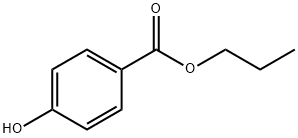

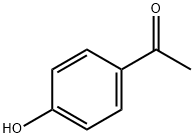

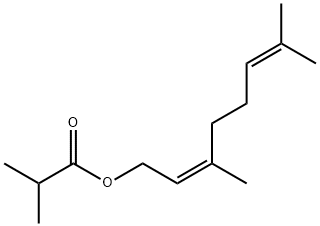


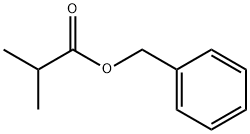
You may like
-
 3-Phenylpropyl Isobutyrate CAS 103-58-2View Details
3-Phenylpropyl Isobutyrate CAS 103-58-2View Details
103-58-2 -
 3-Phenylpropyl isobutyrate CAS 103-58-2View Details
3-Phenylpropyl isobutyrate CAS 103-58-2View Details
103-58-2 -
 1823368-42-8 98%View Details
1823368-42-8 98%View Details
1823368-42-8 -
 2-(3-(tert-butyl)phenoxy)-2-methylpropanoic acid 1307449-08-6 98%View Details
2-(3-(tert-butyl)phenoxy)-2-methylpropanoic acid 1307449-08-6 98%View Details
1307449-08-6 -
 Ethyl 3-(furan-2-yl)-3-hydroxypropanoate 25408-95-1 98%View Details
Ethyl 3-(furan-2-yl)-3-hydroxypropanoate 25408-95-1 98%View Details
25408-95-1 -
 2-Chloro-5-fluoro-1-methoxy-3-methylbenzene 98%View Details
2-Chloro-5-fluoro-1-methoxy-3-methylbenzene 98%View Details
1805639-70-6 -
 1784294-80-9 98%View Details
1784294-80-9 98%View Details
1784294-80-9 -
 Lithium ClavulanateView Details
Lithium ClavulanateView Details
61177-44-4